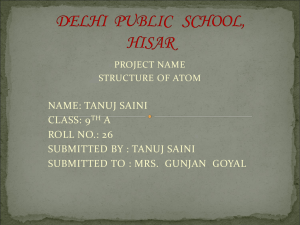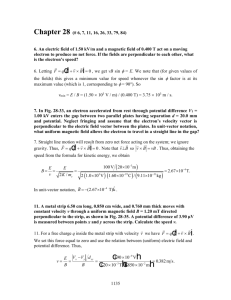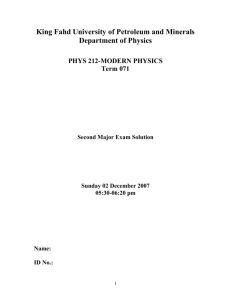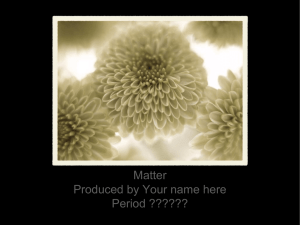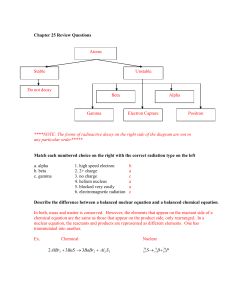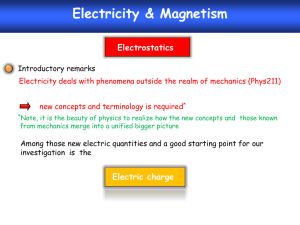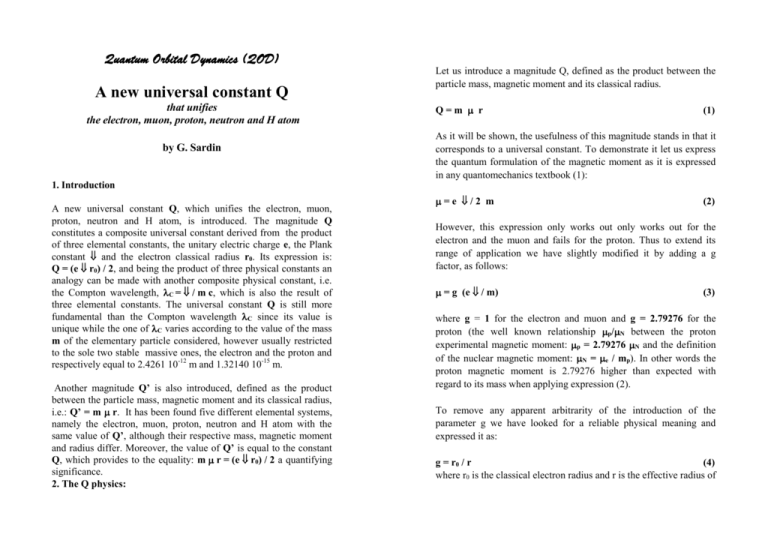
Quantum Orbital Dynamics (QOD)
A new universal constant Q
that unifies
the electron, muon, proton, neutron and H atom
by G. Sardin
Let us introduce a magnitude Q, defined as the product between the
particle mass, magnetic moment and its classical radius.
Q=m r
(1)
As it will be shown, the usefulness of this magnitude stands in that it
corresponds to a universal constant. To demonstrate it let us express
the quantum formulation of the magnetic moment as it is expressed
in any quantomechanics textbook (1):
1. Introduction
A new universal constant Q, which unifies the electron, muon,
proton, neutron and H atom, is introduced. The magnitude Q
constitutes a composite universal constant derived from the product
of three elemental constants, the unitary electric charge e, the Plank
constant and the electron classical radius r0. Its expression is:
Q = (e r0) / 2, and being the product of three physical constants an
analogy can be made with another composite physical constant, i.e.
the Compton wavelength, C = / m c, which is also the result of
three elemental constants. The universal constant Q is still more
fundamental than the Compton wavelength C since its value is
unique while the one of C varies according to the value of the mass
m of the elementary particle considered, however usually restricted
to the sole two stable massive ones, the electron and the proton and
respectively equal to 2.4261 10-12 m and 1.32140 10-15 m.
Another magnitude Q’ is also introduced, defined as the product
between the particle mass, magnetic moment and its classical radius,
i.e.: Q’ = m r. It has been found five different elemental systems,
namely the electron, muon, proton, neutron and H atom with the
same value of Q’, although their respective mass, magnetic moment
and radius differ. Moreover, the value of Q’ is equal to the constant
Q, which provides to the equality: m r = (e r0) / 2 a quantifying
significance.
2. The Q physics:
=e /2 m
(2)
However, this expression only works out only works out for the
electron and the muon and fails for the proton. Thus to extend its
range of application we have slightly modified it by adding a g
factor, as follows:
= g (e / m)
(3)
where g = 1 for the electron and muon and g = 2.79276 for the
proton (the well known relationship p/N between the proton
experimental magnetic moment: p = 2.79276 N and the definition
of the nuclear magnetic moment: N = e / mp). In other words the
proton magnetic moment is 2.79276 higher than expected with
regard to its mass when applying expression (2).
To remove any apparent arbitrarity of the introduction of the
parameter g we have looked for a reliable physical meaning and
expressed it as:
g = r0 / r
(4)
where r0 is the classical electron radius and r is the effective radius of
the particle. Now it makes sense that the g value may vary. Let us at
this point mention that the classical electron radius is not an artificial
magnitude but much at the contrary represents a universal constant
of deep fundamental significance, being the higher size an
elementary particle can have. Its well known value is obtained
through the expression, in the esu system:
from the product of the three constants e, and r0.
r0 = e2 / m0 c2 = 2.82 10-15 m = 2.82 Fermi
Thus:
(5)
Q = 0.5101 * 1836.12 * 2.82 = 2646 q (MeV * n.m * Fm) (9)
Q = 2646 MeV * n.m * Fm = 2.382 1C * J.s * m
Let us now reformulate the Q magnitude:
Q = m [(e / 2 m)(r0 / r)] r = (e r0) / 2
If using the more handy units of MeV, n.m and Fm the value of Q is
then:
(6)
Q has thus the nature of a universal constant since being the product
of three of them, the unitary electric charge e, the Plank constant
and the electron classical radius r0 (derived itself from expression 5).
Since Q = (e r0) / 2, it is thus the product of three elemental
constants, and a simil can be made with another physical constant,
the Compton wavelength, C = / m c which is the also the product
between three elemental constants, equal to 2.4261 10-12 m for the
electron and 1.32140 10-15 m for the proton.
(10)
The classical electron radius can be regarded as the radius of a loop
spun by a punctual charge that would structure the electron. The
energy and magnetic moment of this loop would respectively
represent the electron rest energy and magnetic moment.
In the quite inappropriate (odd) International System when applied to
Particle Physics the value of Q is:
For the calculation of the referential Q constant from the product e
ro the C, J.s and m units from the International System has been used.
Since the m r product (where m, and r are variable parameters
depending on each elementary particles) and the e ro product (where
e, and ro are universal physical constants) are both equal to 2.382 1068
C * J.s * m it thus implies that both are also equal to 2646 MeV *
n.m * Fm. So, from now on it will be used the handier Q value
derived from using the MeV, nm and Fm units.
Q = (1.60210 10-19 * 1.05450 10-34 * 2.82 10-15) / 2 = 4.764 / 2
5. The muon
Q = 2.382 10-68 q
where q = C * J.s * m
(7)
3. The electron
Let us now calculate the magnitude Q for the electron:
Q = m * * r = 9.1091 10-31 * * 2.82 10-15
Q = 2.382 1q (C * J.s * m)
(8)
This Q value derived from the product of the three parameters m,
and r tightly matches with the previous value Q derived instead
The muon magnetic moment is provided by the same expression (2)
than for the electron, where m expresses now the muon rest mass and
g is also equal to 1. Since g = ro/r this implies that the electron has
preserved the same radius ro in transforming into a muon, through the
increase of its mass. Taking this into account it emerges that the Q
value for the muon is the same than for the electron.
Q = m * * ro = 105.6584 * 17.378 * 2.82 = 2646 q
4. The proton
(11)
As already said, it is known that for the proton g = 2,79276. Since we
have defined it as expressing the ratio r0/r, it thus implies that the
proton classical radius is:
r = r0 / g = 2.82 / 2.79275 = 1.01 Fm
(12)
Using this value of r and the experimental value of the proton mass
and magnetic moment, let us evaluate the corresponding proton Q
value.
Q = m r = 938.256 * 2.79275 * 1.01 = 2646 q
(13)
in agreement with the Q reference value from the product e r0 /2. It
emerges that the structural inner transformation of the proton with
respect the one of the positron is deeper than the one of a muon with
respect to the one of an electron since in the proton case it implies in
addition to the mass change a simultaneous size change. This
evidences that in the inner restructuration of particle two parameters
are involved, one related to its mass (or inner energy) and another
one with the volume (particle size) in which this energy is confined,
varying in a way as to preserve the Q value.
Let us stress that the proton Q value cannot be seen as the mere
result of an appropriate adjust of the proton radius. In effect the
calculated value is equal to the experimental one extracted from the
nuclear sizes, defined from the mean electromagnetic radius <r mag>
of the nucleus (1).
This value represents thus the mean nucleon radius. Let us compare
it with the mean electromagnetic radius <rmag> of the nucleus (1),
found to vary with the nucleon number A as:
<rmag> = (1.07 0.02) A1/3 Fm
(23)
For A =1, <rmag> = 1.07 Fm
(24)
We have found the values rp = 1.01 Fm and rn = 1.11 Fm for the
proton and neutron radius. The average value:
<r> = (rp +rn) / 2 = (1.01 + 1.11) / 2 = 2.12 / 2 = 1.06 Fm
(25)
which is in extremely good agreement with the experimental one of
1.07 Fm.
6. The H atom
Let us now consider the orbital Q value of the H atom. This atomic
system is a quite different to the previous particles systems. For
example, the Bohr radius is equal to 0.53 * 10-10 m while the proton
radius is only equal to 10-15 m, hence the H atom is about 52
thousands times wider than its nucleus, the proton. Also, the bonding
energy of the its electronic orbital is equal to only 13.6 eV, i.e. about
70 million times smaller than the proton structural energy of 938,256
MeV. Despite these huge differences its orbital Q value ends up to
be the same than the structural Q value of its constituents, the proton
and electron.
In effect, taking into account that the orbital moment (L=1) is twice
the spin moment (S=1/2) of the previous particles considered, the
atomic Q is thus equal to:
Q = (L / S) (m r) = 2 (13.6 10-6 * 1836.12 * 0.53 10-8)
Q = 2647 q
(14)
This shows that an electron captured by a proton acquires an orbital
such as to preserve the Q value, identical to their structural Q value.
7. The neutron
The neutron is considered in the present frame to be a composite
particle formed by the structural superposition of an electron and a
proton. Expressed in terms of particles structural wave function, the
neutron one can be formulated as follows:
n = + + – = p + ( e + ) = p + shell
(15)
7.3. Neutron magnetic moment
The heavier proton ( p) is regarded to act as a core and the much
lighter electron ( e) is regarded to restructure and act as a shell shell
, with an energy of 1.29 MeV, instead of only 0.51 MeV when in
form of electron. So, the neutron can be seen as structured by a wave
function n , composed of two parts: n = + + – = p + shell.
The experimental neutron magnetic moment is equal to:
(neutron) = - 1.913043 nm
7.1. Energy of the neutron shell
The minus sign means that its spin and magnetic moment have
opposite orientations. The proton magnetic moment is equal to
+ 2.79285 nm. This implies that the neutron shell magnetic moment is
equal to:
The energy of the neutron shell is obtained by the difference between
the neutron and proton masses.
(neutron shell) = - 1.913043 - 2.79285 = - 4.70589 nm
E (neutron shell) = 939.550 – 938.256 = 1.294 MeV
So the Q value of the neutron shell would be:
(16)
Q (shell) = 1.29 * 4.70589
7.2. Neutron classical radius
Let us now calculate the radius from the neutron or more specifically
the one of its shell. The shell energy of 1.29 MeV can be regarded as
derived from the potential energy of a negative electric charge q
falling into the electric field of a proton, from infinity the a distance
r. Applying the expression of the Coulomb field, the resultant energy
is:
E (neutron shell) = F(x)dx = (q2/x2)dx = q2/x
(17)
r (neutron shell) = q2 / E
r = (1.60210 10-19)2 / ((1.294 / 939.550) * 1.67482 10-27)
r (neutron shell) = 1.11*10-15 m = 1.11 Fm
(18)
The orbital approach to the neutron structure provides a simple way to
get its classical radius, whose value is in tight agreement with experimental
data.
1.11 = 6.76 MeV.nm.Fm
(20)
This value is much smaller than the one of the Q constant defined
previously. However, instead to just consider the final product, let us
focus on the process of the neutron formation, regarded as a composite
particle derived from the perturbative association of a proton and an
electron, i.e.:
p + e p + shell + = n
(21)
Hence:
e shell +
thus the radius r is equal to:
*
(19)
or
= e + shell
(22)
Where e and shell respectively represent the original and final
state and expresses the associated transition. If it is considered
that during the wave function transition the magnetic moment e
of the electron is totally vanishes and that after while the shell
acquires a new magnetic moment shell specific to its new state,
hence the total magnetic moment of the transition is:
(eshell ) = e shell 1836.124.70589
(eshell ) = 1840.83 n.m
(23)
Thus the total balance of the magnetic moments involved in the
process is:
8. Conclusion
(process) = p e shell) 2.79285 (1836.12 4.70589
(process)= 1843.62 n.m
(24)
Using this value of let us now calculate the Q value corresponding to
the process of neutron formation:
Q (process) = m (shell) * (process) * r (shell)
(25)
Q = 1.294 * 1843.62 * 1.11 = 2648 q
(26)
Hence, it has been found for the neutron formation a Q value which
is identical to the Q constant. This points out that the neutron,
regarded as formed by the superposition of an electron and a proton,
rearranges in such a way that the Q value of the process is preserved.
Let us stress that the electron magnetic moment is not present within
the neutron and that it has vanished in the restructuration of the
electron (classical radius = 2.82 Fm) into the shrunk neutron shell
(classical radius = 1.11 Fm).
7.4. The quasi-stability of the free neutron
Let us point out that during the restructuration of the electron into
the neutron shell two processes taken place: on one hand there is an
energy increase 0.78 MeV, but on the other hand there is a huge
magnetic moment drop of 1840.83 n.m., leading to a magnetic well.
If the inverse process is then considered, i.e. the spontaneous
dissociation of the free neutron, it leads to an energy release of 0.78
MeV but it also implies a magnetic moment increase of 1840.83 n.m.
The required hopping off its magnetic well through the generation of a
magnetic moment simultaneous to the energy drop may provide the
explanation of the long mean life time of the free neutron, being at
once in a state of energy excess of 0.78 MeV but into a magnetic well
of 1840.83 n.m.
This simple approach applied to the structure orbital of four
elementary particles, namely the electron, muon, proton and neutron
and also the electronic orbital of the H atom provides a magnitude
Q = m r which has the same value for all these cases which is
equal to a universal constant Q = (e r0) / 2. This points out a
conservation law common to all them and provides an open way to
start unraveling the quantization of elementary particles.
This has been achieved by introducing a g factor in the quantum
expression of the magnetic moment = g (e / m), the physical
meaning of g being the ratio between the electron classical radius r o
and the particle effective mean radius r. This has allowed to define a
new universal constant Q.
References
(1) H.A. Enge, Introduction to Nuclear Physics, Addison-Wesley
Publishing Company, Inc. (1966) p.9
(2) D.R. Lide and H.P.R. Frederike, Summary Tables of Particle
Properties, Section 11-1, CRC Handbook of Chemistry and Physics,
CRC Press (1998)
(3) Particle Data Group Web Site: http://pdg.lbl.gov and Review of
Particle Physics: C. Caso et al., European Physical Journal C3, 1
(1998)
(4) Unitary Orbital Conception of Elementary Particles and their
Interactions: http://usuarios.intercom.es/gsardin
Copyrights May 1999, all rights reserved
Legal Deposit: 32317


